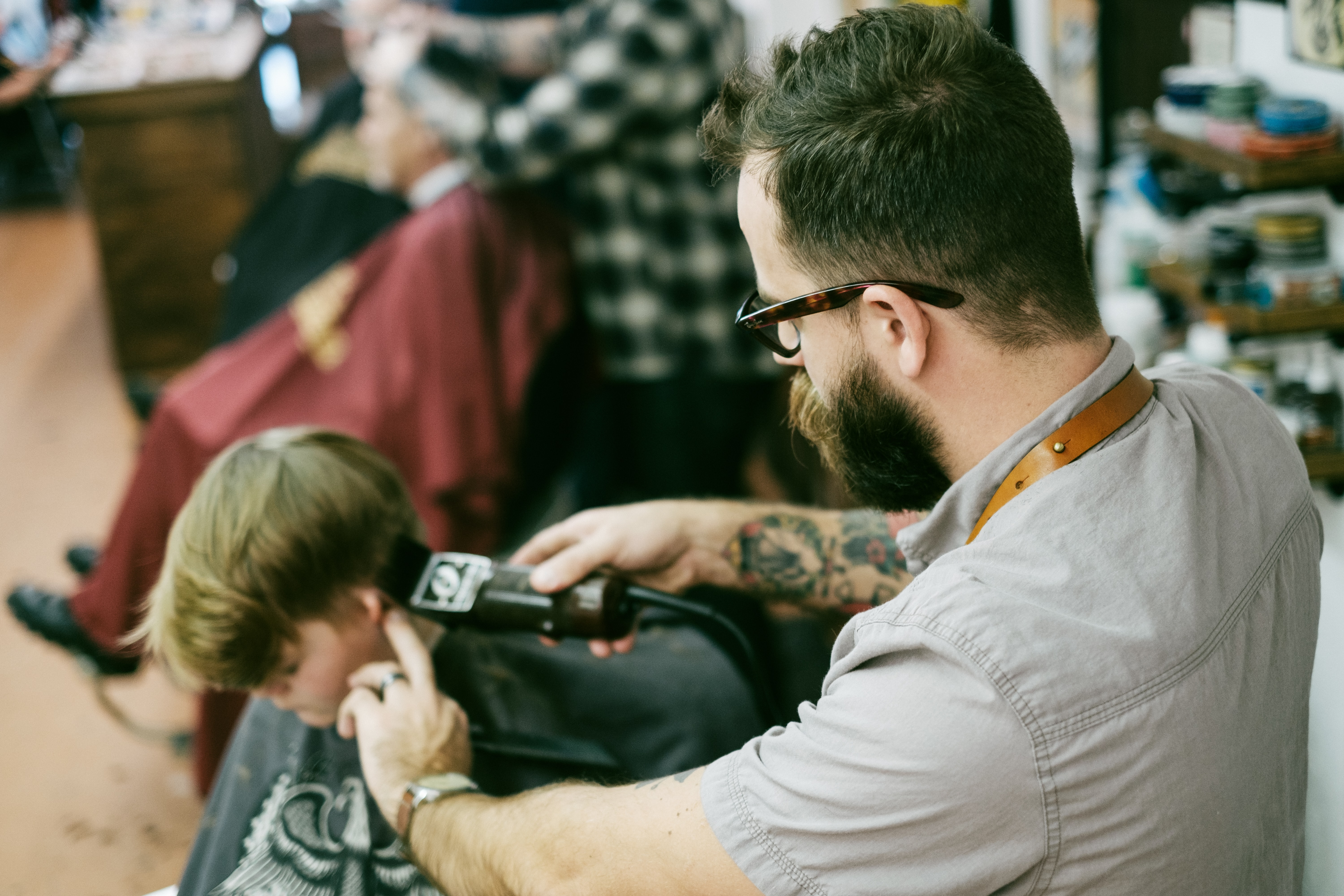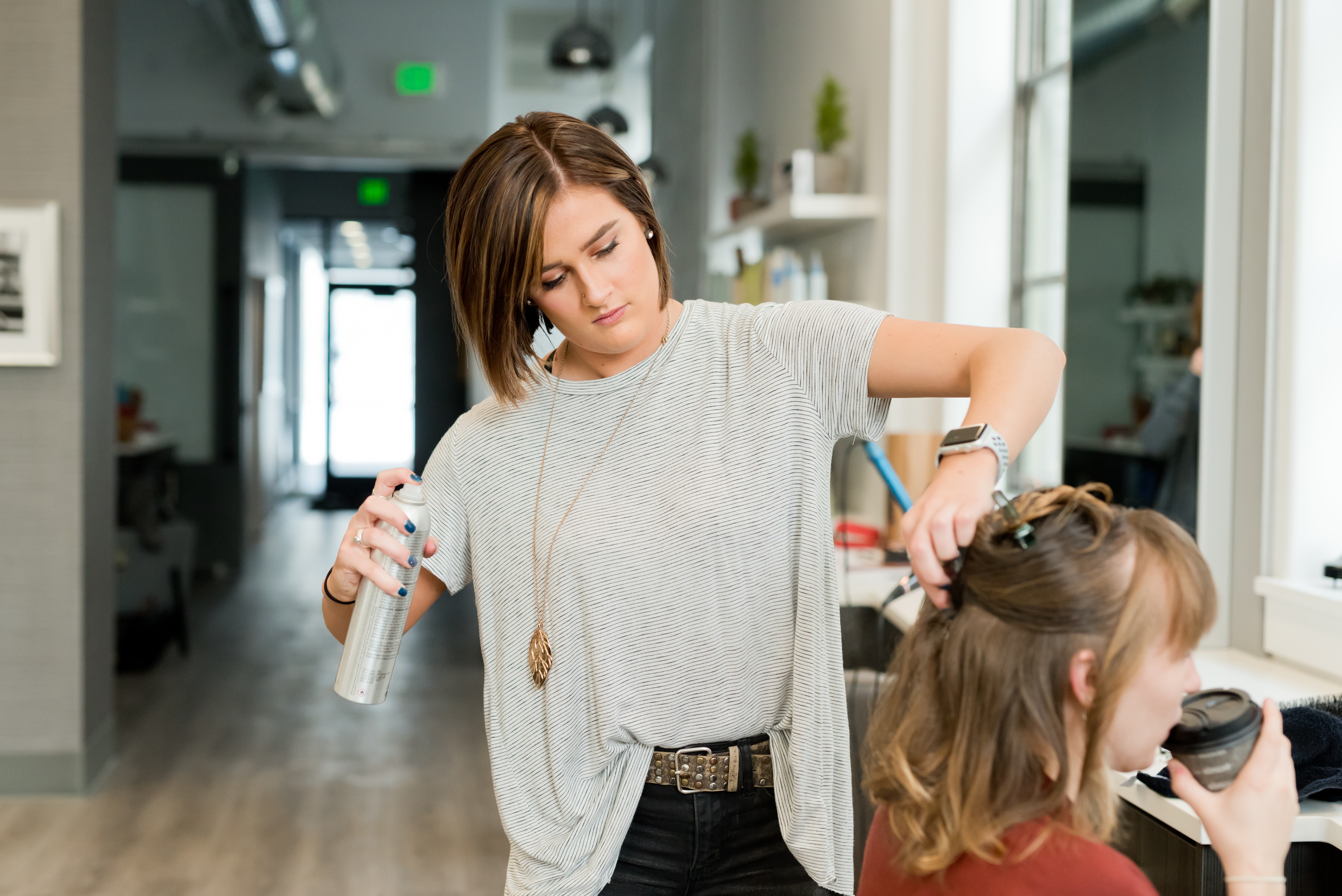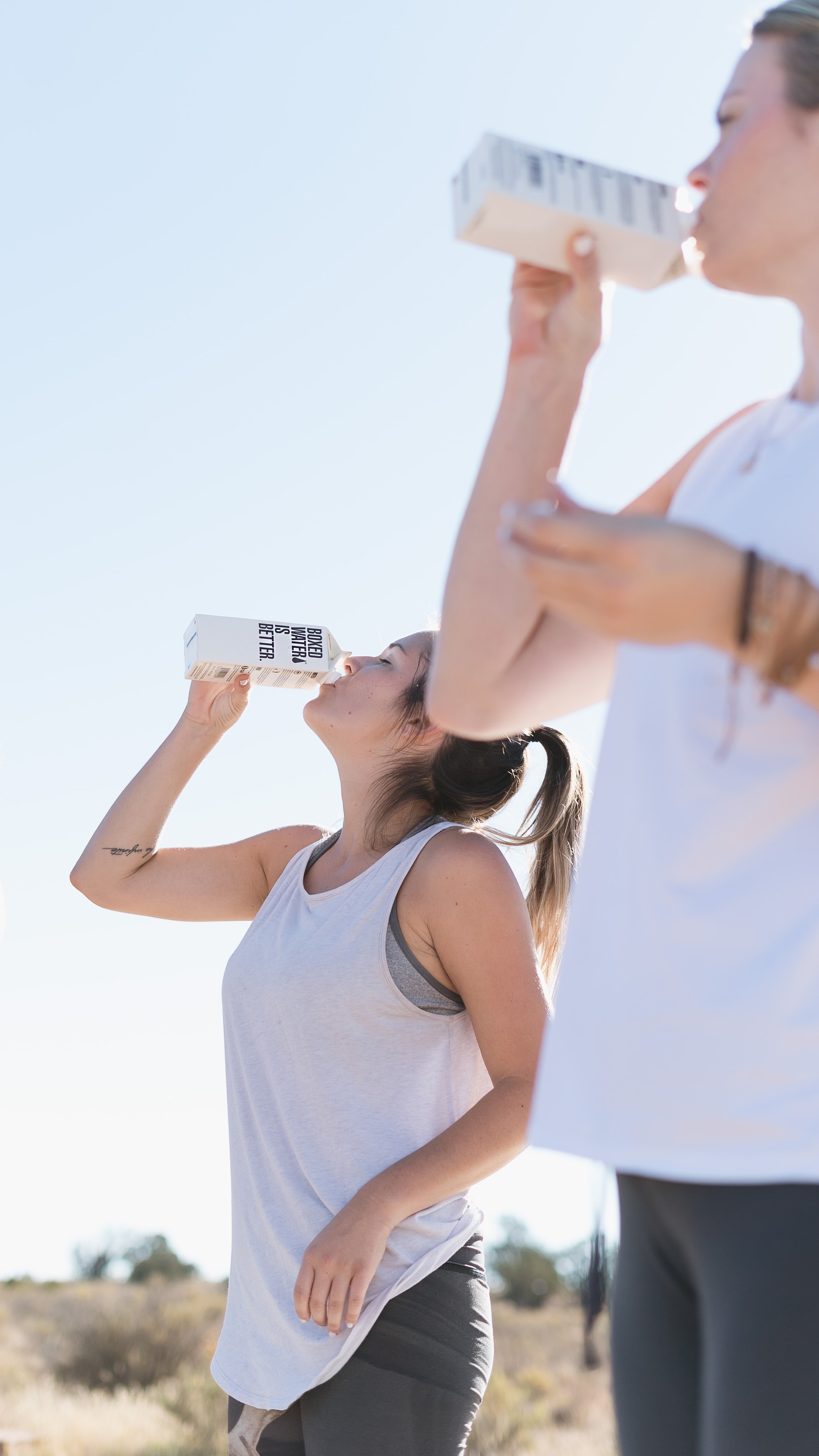As communities and businesses are opening, you may be looking for ways to resume some daily activities as safely as possible. While there is no way to ensure zero risk of infection, it is important to understand potential risks and how to adopt different types of prevention measures to protect yourself and to help reduce the spread of COVID-19. As a reminder, if you have COVID-19, have symptoms consistent with COVID-19, or have been in close contact with someone who has COVID-19, it is important to stay home and away from other people. When you can leave home and be around others depends on different factors for different situations. Follow CDC’s recommendations for your circumstances.
In general, the more closely you interact with others and the longer that interaction, the higher the risk of COVID-19 spread. So, think about:
- How many people will you interact with?
- Interacting with more people raises your risk.
- Being in a group with people who aren’t social distancing or wearing cloth face coverings increases your risk.
- Engaging with new people (e.g., those who don’t live with you) also raises your risk.
- Some people have the virus and don’t have any symptoms, and it is not yet known how often people without symptoms can transmit the virus to others.
- Can you keep 6 feet of space between you and others? Will you be outdoors or indoors?
- The closer you are to other people who may be infected, the greater your risk of getting sick.
- Keeping distance from other people is especially important for people who are at higher risk for severe illness, such as older adults and those with underlying medical conditions.
- Indoor spaces are more risky than outdoor spaces where it might be harder to keep people apart and there’s less ventilation.
- What’s the length of time that you will be interacting with people?
- Spending more time with people who may be infected increases your risk of becoming infected.
- Spending more time with people increases their risk of becoming infected if there is any chance that you may already be infected.
What to Consider Before You Go:
Asking these questions can help determine your level of risk:
Is COVID-19 spreading in my community?
Find out by viewing the latest COVID-19 information and a map of states with reported COVID-19 infections.
What are the local orders in my community?
Review updates from your local health department to better understand the situation in your community and what local orders are in place in your community. Also find out about school closures, business re-openings, and stay-at-home orders in your state.
Will my activity put me in close contact with others?
Practice social distancing because COVID-19 spreads mainly among people who are in close contact with others.
- It’s important that you and the people around you wear a cloth face covering when in public and particularly when it’s difficult to stay 6 feet away from others consistently.
- Choose outdoor activities and places where it’s easy to stay 6 feet apart, like parks and open-air facilities.
- Look for physical barriers, like plexiglass screens or modified layouts, that help you keep your distance from others.
- Use visual reminders—like signs, chair arrangements, markings on the floor, or arrows—to help remind you to keep your distance from others.
Am I at risk for severe illness?
Older adults and people of any age who have serious underlying medical conditions might be at higher risk for severe illness from COVID-19. While the risk for severe illness is lower for others, everyone faces some risk of illness. Some people have no symptoms, others have mild symptoms, and some get severely ill.
Do I live with someone who is at risk for severe illness?
If you live with older adults someone with certain underlying medical conditions, then you and all family members should take extra precautions to minimize risk. Learn more about what you can do if you or any members of your family are at higher risk of severe illness from COVID-19.
Do I practice everyday preventive actions?
Continue to protect yourself by practicing everyday preventive actions, like monitoring yourself for symptoms, not touching your face with unwashed hands, washing your hands often, social distancing, disinfecting surfaces, wearing cloth face covers, and staying home if you are sick.
Will I have to share any items, equipment, or tools with other people?
Choose places where there is limited sharing of items and where any items that are shared are thoroughly cleaned and disinfected between uses. You can also choose to visit places that share, post, or announce that they have increased cleaning and disinfection to protect others from COVID-19.
Will I need to take public transportation to get to the activity?
Public transit can put you in close contact with others. When using public transportation, follow CDC’s guidance on how to protect yourself when using transportation
Does my activity require travel to another community?
Before considering trips outside your community, consult CDC’s travel considerations.
If I get sick with COVID-19, will I have to miss work or school?
If you are sick with COVID-19, stay home. Also find out about your work or school’s telework or sick leave policy.
Do I know what to do if I get sick?
Know the steps to help prevent the spread of COVID-19 if you are sick.
If you decide to engage in public activities, continue to protect yourself by practicing everyday preventive actions. If you will be running an errand, follow CDC’s running errands considerations.
Items to have on hand
- A cloth face covering
- Tissues
- Hand sanitizer with at least 60% alcohol, if possible

Frequently Asked Questions
Is it safe to do activities?
The risk of an activity depends on many factors, such as:
- Is COVID-19 is spreading in your community?
- Will you have a potential close contact with someone who is sick or anyone who is not wearing a face covering (and may be asymptomatic)?
- Are you at increased risk of severe illness?
- Do you take everyday actions to protect yourself from COVID-19?
CDC cannot provide the specific risk level for every activity in every community. That’s why it’s important for you to consider your own personal situation and the risk for you, your family, and your community before venturing out.
What activities are safer?
Activities are safer if you can maintain at least 6 feet of space between you and others, because COVID-19 spreads easier between people who are within 6 feet of each other. Indoor spaces with less ventilation where it might be harder to keep people apart are more risky than outdoor spaces. Interacting without wearing cloth face coverings also increases your risk.
Venturing Out? Be Prepared and Stay Safe
Consider these tips to keep you and others safe when you venture out.

Going to the Bank
- Ask about options for telephone or virtual meetings to use banking services.
- Use drive-thru banking services, automated teller machines (ATM), or mobile banking apps for routine transactions that do not require face-to-face assistance as much as possible.
- Look for any extra prevention practices being implemented by the bank, such as plexiglass barriers for tellers or bankers, staff wearing cloth face coverings, or physical distancing signs in the lobby.
- Wear a cloth face covering when doing any in-person exchanges and unable to stay at least 6 feet apart from other people – and make sure that bank employees and other people inside the bank are also wearing cloth face coverings.
- Use hand sanitizer containing at least 60% alcohol after any deposit, withdrawal, exchange, drive-thru visit, or use of an ATM.
- Wash your hands thoroughly when you arrive home or to your destination where a restroom is available.
Dining at a Restaurant
- Check the restaurant’s website and social media to see if they have updated their information to address any COVID-19 safety guidelines.
- Before you go to the restaurant, call and ask if all staff are wearing cloth face coverings while at work.
- Wear cloth face coverings when less than 6 feet apart from other people or indoors.
- Take precautions – like wearing a cloth face covering as much as possible when not eating and maintaining a proper social distance if you are dining with others who don’t live with you.
- Ask about options for self-parking to remove the need for a valet service.
- Maintain a social distance of 6 feet or more in any entryway, hallway, or waiting area.
- Wash your hands for at least 20 seconds when entering and exiting the restaurant. If soap and water are not readily available, use a hand sanitizer that contains at least 60% alcohol. Cover all surfaces of your hands and rub them together until they feel dry.
- When possible, sit outside at tables spaced at least 6 feet apart from other people.
- When possible, choose food and drink options that are not self-serve to limit the use of shared serving utensils, handles, buttons, or touchscreens.
- Before using the restroom, make sure there is adequate soap and paper towels or hand sanitizer containing at least 60% alcohol.
Hosting Gatherings or Cook-Outs
- Remind invited guests to stay home if they have been exposed to COVID-19 in the last 14 days or are showing COVID-19 symptoms. Anyone who has had close contact with a person who has COVID-19 should also stay home and monitor their health. Invited guests who live with those at higher risk should also consider the potential risk to their loved ones.
- Host your gathering outdoors, when possible. If this is not feasible, make sure the room or space is well-ventilated (for example, open a window).
- When guests arrive, minimize gestures that promote close contact. For example, don’t shake hands, do elbow bumps, or give hugs. Instead wave and verbally greet them.
- Wear cloth face coverings when less than 6 feet apart from people or indoors.
- Consider providing face coverings for guests or asking them to bring their own.
- Consider providing hand sanitizer in addition to clearly marked hand washing areas.
- Wash your hands for at least 20 seconds when entering and exiting social gatherings. If soap and water are not readily available, use a hand sanitizer that contains at least 60% alcohol. Cover all surfaces of your hands and rub them together until they feel dry.
- Arrange tables and chairs to allow for social distancing. People from the same household can be in groups together and don’t need to be 6 feet apart – just 6 feet away from other families.
- Encourage guests to bring their own food and drinks.
- If serving any food, consider identifying one person to serve all food so that multiple people are not handling the serving utensils.
- If you choose to use any shared items that are reusable (e.g., seating covers, tablecloths, linen napkins), wash, clean, and sanitize them after the event.
- Use single-use options or identify one person to serve sharable items, like salad dressings, food containers, and condiments, so that multiple people are not handling the items.
- Limit people going in and out of the areas where food is being prepared or handled, such as in the kitchen or around the grill, if possible.
- Remind guests to wash their hands before serving or eating food.
- If planning activities for adults and/or kids, consider those where social distancing can be maintained, like sidewalk chalk art or frisbee.
- Use touchless garbage cans or pails.
- Use gloves when removing garbage bags or handling and disposing of trash. Wash hands after removing gloves.
- Clean and disinfect commonly touched surfaces and any shared items between use when feasible.
- Make sure there is adequate soap or hand sanitizer containing at least 60% alcohol available in the restrooms and encourage guests not to form a line at the door. Consider also providing cleaning supplies that allow guests to wipe down surfaces before they leave.
- Use single-use hand towels or paper towels for drying hands so guests do not share a towel.
- Consider keeping a list of guests who attended for potential future contract tracing needs.
Using Gyms and Fitness Centers
- Use options for online reservations and check-in systems when available.
- Look for any extra prevention practices being implemented by the facility, such as new plexiglass barriers, staff wearing cloth face coverings, and closing of shared locker room space.
- Seek facilities with outdoor space or options for virtual classes and training sessions as much as possible.
- Limit attendance at indoor group training sessions. If you do attend such a session, maintain as much distance as possible between yourself and other individuals, and use cloth face coverings if they do not interfere with your activity. If you need to be indoors, open windows to increase airflow throughout the space.
- Maintain at least 6 feet of separation as much as possible in areas that may lead to close contact (within 6 feet) among other people, such as weight rooms, group fitness studios, pools and saunas, courts and fields, walking/running tracks, locker rooms, check-in areas, parking lots, and routes of entry and exit.
- Ensure equipment is clean and disinfected. Wipe down machines and equipment with disinfecting wipes and use hand sanitizer that contains at least 60% alcohol before using machines.
- Do not share items that cannot be cleaned, sanitized, or disinfected between use, such as resistance bands and weightlifting belts.
- Don’t shake hands, give high-fives, do elbow bumps, or touch others because close contact increases the risk of acquiring COVID-19.
- Be prepared that locker room access may be limited to the restroom area only, prohibiting the use of shower and changing areas.
- Wear a cloth face covering when interacting with other people to minimize the risk of transmitting the virus.
- Wearing cloth face coverings is most important when physical distancing is difficult and when exercise type and intensity allows. Consider doing any vigorous-intensity exercise outside when possible and stay at least 6 feet away from other participants, trainers, and clients if unable to wear a face covering.
- If possible, wear a face covering when walking on an indoor track or when doing stretching or low-intensity forms of yoga indoors.
- Wash your hands before adjusting your face covering—review information about proper use, removal, and washing of cloth face coverings.
Going to Nail Salons
- Book services in advance to remove the need for waiting in a lobby with other people. If you must wait, maintain social distance.
- Before you go, call and ask if all staff are wearing cloth face coverings at work and if there are physical barriers to minimize risk of transmission (e.g., plexiglass barriers).
- If offered by the salon, wait in your car or outside until you can be contacted by mobile phone when it is your turn to be seen for an appointment.
- Wear a cloth face covering at all times when inside the salon.
- Wash your hands or use hand sanitizer immediately before receiving your service and after touching any common surfaces like curing lamps, countertops, doorknobs, toilets, tables, light switches, phones, faucets, sinks, and keyboards.
- Use cashless payment options when possible. If not available, ensure that cash and cards are handled with care by employees either by changing gloves between each transaction or with use of hand sanitizer between clients.
- Look for no-touch waste baskets at the cash registers and in the restrooms.
Visiting Libraries
- Use online reservation and advance-order checkout systems, if possible.
- Choose digital over print materials, if possible.
- Request a curbside pick-up if available and use cloth face coverings during pick-up exchanges.
- Wash your hands before and after exchanges.
- Clean and disinfect electronics (laptops) and library materials in plastic containers (CDs, audio books) during returns and/or exchanges.
- If allowed and available inside the library, use computer stations one person at a time. Ensure they are cleaned before use and use a disinfectant wipe on the mouse and keyboard.
Traveling Overnight
- Use options for online reservation and check-in, mobile room key, and contactless payment.
- Before you go, call and ask if all staff are wearing cloth face coverings at work.
- Look for any extra prevention practices being implemented by the hotel, such as plexiglass barriers at check-in counters, and physical distancing signs in the lobby.
- Ask if the hotel has updated policies about cleaning and disinfecting or removing frequently touched surfaces and items (such as pens, room keys, tables, phones, doorknobs, light switches, elevator buttons, water fountains, ATMs/card payment stations, business center computers and printers, ice/vending machines, and remote controls).
- Wear a cloth face covering in the lobby or other common areas.
- Minimize use of areas that may lead to close contact (within 6 feet) with other people as much as possible, like break rooms, outside patios, inside lounging areas, dining areas/kitchens, game rooms, pools, hot tubs, saunas, spas, salons, and fitness centers.
- Request contactless delivery for any room service order.
- Consider taking the stairs. Otherwise wait to use the elevator until you can either ride alone or only with people from your household.
- If you are considering cleaning your travel lodgings, see CDC’s guidance on how to clean and disinfect.
- Visit CDC’s travel website for more information when planning trips.

